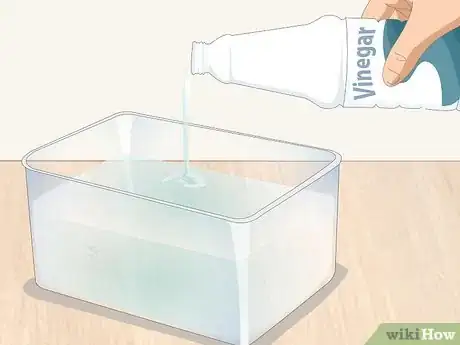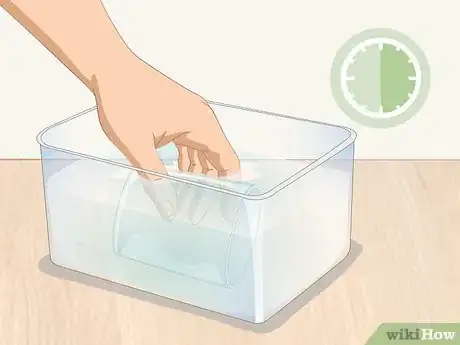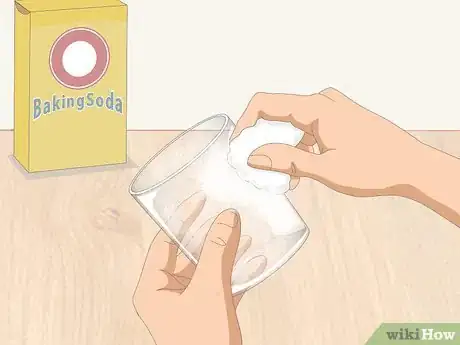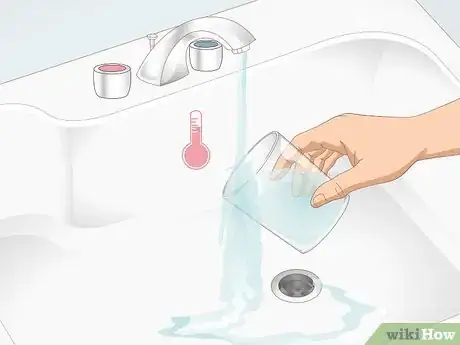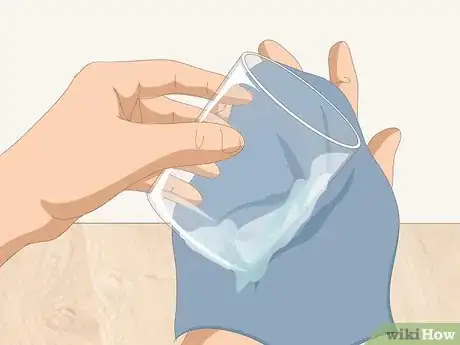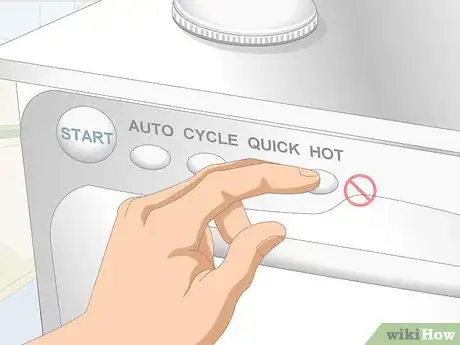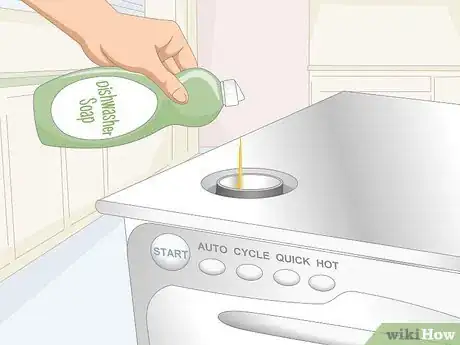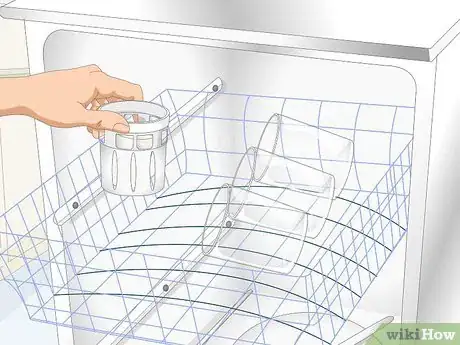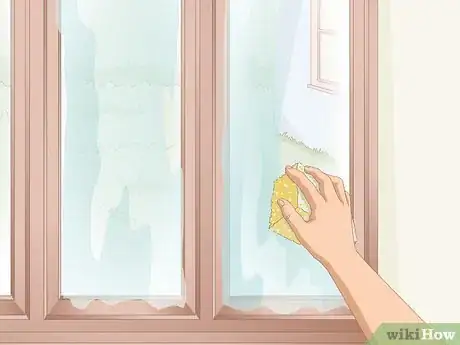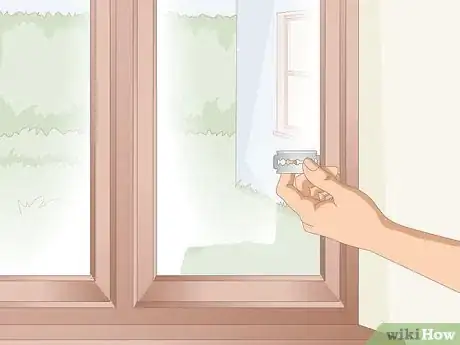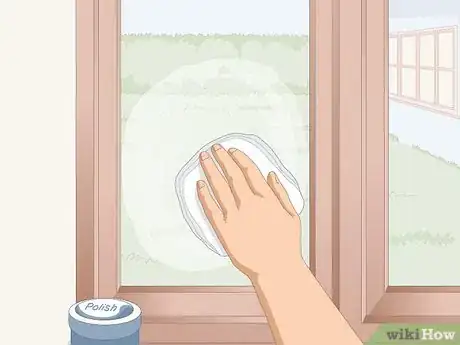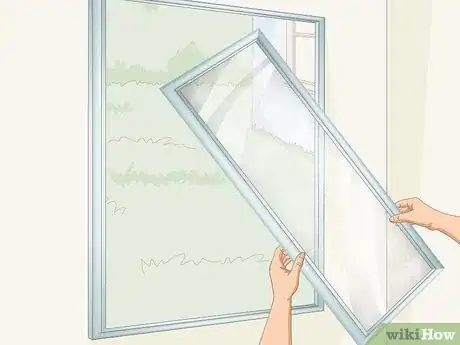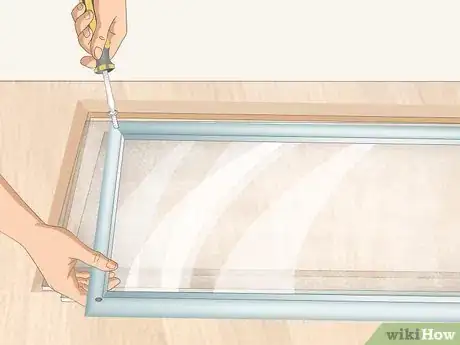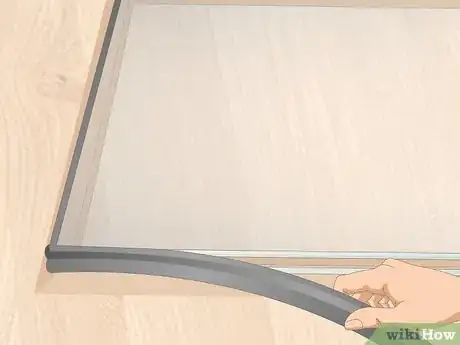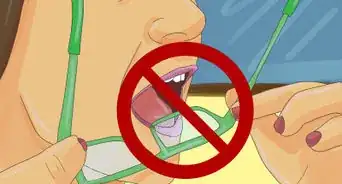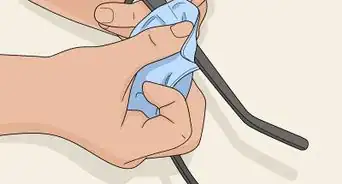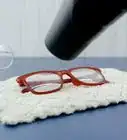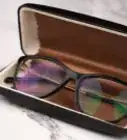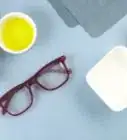This article was co-authored by Filip Boksa and by wikiHow staff writer, Hannah Madden. Filip Boksa is the CEO and Founder of King of Maids, a U.S. based home cleaning service that helps clients with cleaning and organization.
There are 13 references cited in this article, which can be found at the bottom of the page.
This article has been viewed 14,969 times.
All glass can get foggy, which makes it hard to see out of and can even seem dirty or dingy. Foggy glass can be caused by condensation or mineral deposits. If your drinking glasses look cloudy or foggy, use baking soda and vinegar to scrub them and prevent it by using less dishwashing soap. Clean dirty windows with a razor then polish the glass. If you have condensation on double-pane windows, clean them and replace the rubber seal.
Steps
Cleaning Foggy Drinking Glasses
-
1Pour white vinegar into a container large enough to hold your glasses. White vinegar is a natural cleaning agent that breaks down most of the grime that makes glasses cloudy.[1] Pour white vinegar into a bucket or a plugged sink. Make sure the vinegar will be able to submerge all of your glasses that are cloudy.[2]
-
2Soak your glasses in the vinegar for 30 minutes. Vinegar works to break down minerals. Make sure your glasses are submerged and leave them to soak for about 30 minutes. Make sure the container won’t get bumped or moved while they are sitting.[3]
- If your glasses are especially cloudy, leave them in the vinegar for an extra 30 minutes.
Advertisement -
3Rub the spots with baking soda if they are still there. If the vinegar did not break down all of the minerals that made your glass foggy, sprinkle baking soda on the cloudy areas. Use a damp towel to gently buff the baking soda into the glass. Baking soda will make scratches less visible and will help to break down any minerals left over.[4]
- Baking soda is gentle yet abrasive, so it can buff out minerals without scratching your glasses.
-
4Rinse the glasses in warm water. Take each glass and rinse them one by one to remove any of the vinegar and baking soda left over. Use warm water to break down any of the baking soda that is left and wash it away. Pour the vinegar down your drain.[5]
- Vinegar and baking soda will not clog your drain, since they break down dirt and grime. It may even help to unclog your drain.
-
5Dry your glasses with a microfiber towel. Microfiber towels are less abrasive than normal towels, so they won’t scratch soft glass. Gently dry each glass with a microfiber towel until they are dry. Make sure the towel is clean and free of debris.[6]
- Microfiber towels can be found at most home goods stores.
Tip: If your glasses are still cloudy after the vinegar and baking soda, they may be “etched,” or worn down in certain areas. Unfortunately, etching cannot be fixed.
Preventing Foggy Drinking Glasses
-
1Do not use heat to dry your glasses in the dishwasher. Fogginess in glass is caused by mineral deposits that soap cannot clean off. Heat makes those mineral deposits stick to glass even more. Do not use the “heated dry” setting on your dishwasher to dry your glasses. Take them out of the dishwasher immediately so they don’t have to sit in a hot environment for too long.[7]
- Not using a heated dry setting also saves energy.
-
2Use less dishwasher soap than recommended. Mineral deposits that create fogginess are often caused by “hard water,” or water with a lot of minerals in it. Hard water combined with too much dishwasher detergent can make the minerals stick onto the glass even easier. Try using ¾ of the amount of dishwasher soap that you usually would to see if it prevents fogginess in the future.[8]
Tip: You can check your local water quality facility’s website to see if your area has hard water or not.
-
3Add a rinse aid to your dishwasher. Rinse aids help to prevent water spots and cloudiness by spreading out the water molecules that your dishwasher uses to rinse your glasses. They are especially helpful if you have hard water, or water with a lot of minerals in it. Pour your rinse aid into its specified compartment in your dishwasher, or purchase a rinse aid basket to hang in your dishwasher to dispense it.[9]
- You can find rinse aid at most grocery stores in the same section as dishwasher detergent.
Cleaning Hazy Glass Windows
-
1Wash your windows with soap and water. Remove any initial dirt or cobwebs with a hose and dish soap. Use a soft sponge so you don’t scratch the glass of your window. Wash your window quickly, since it is just an initial cleaning.[10]
- If your windows are tall, a squeegee with an extender pole to reach the top.
-
2Scrape your window with a razor blade. Razor blades will gently remove any paint, stuck on dirty, or mineral deposits on your glass. Carefully hold a razor blade in a parallel position to the glass. Slowly move your hand up to scrape along the glass. Do not angle the razor blade, or you could nick the glass.[11]
Tip: Use a glass razor scraper with a handle on it so that it is easier to hold.
-
3Use a glass polisher if your windows are still hazy. If you are still having trouble seeing through your windows, buff in some glass polisher to make your windows shine. Pour a small amount of polish on a clean rag and buff it into the glass in a circular motion. Do this to both sides of the glass. Wipe it off with a clean towel after the whole window is covered.[12]
- You can buy glass polisher at most hardware or automotive stores.
Removing Condensation from Double-Pane Windows
-
1Remove the double-paned window from the frame. Unscrew the window or windows from the hinges or frames of your window. Set the window on a flat surface, like a large table. Keep all the hardware nearby so you can re-install your window easily.[13]
- Use caution when handling your window. If it is especially large or long, ask another person to help you carry it.
-
2Unscrew any hardware to separate the panes. Double-pane windows have 2 sets of glass that are held in place by a frame and a seal. Use a screwdriver to take the frame off of the panes of glass and separate the panes. Remove the rubber seal from the panes of glass as well.[14]
-
3Wipe out condensation with a towel and let the panes air dry. Condensation is caused by moisture trapped in between the 2 panes. Use a dry towel to gently wipe away any water droplets. Let the panes air dry completely for at least 1 hour. Put them in a place where they won’t get wet, like inside or under a covered patio.[15]
- If you live in a moist climate, do not leave your windows outside.
-
4Replace the seal in your window to prevent condensation. The rubber seal that surrounds the panes of glass is what locks out moisture. If your seal is broken or cut, it may be why you are getting condensation on your windows. Wrap a new rubber seal around your window panes before you put them back in their frame.[16]
-
5Put your panes back in the frames and reinstall them in your home. Use the hardware that you took out to separate the panes from their frame to screw them back together. Install the window back into your home with the hardware you used to take it out. Make sure the window is flush with the wall and the glass is fully in the frame before you put it up.[17]
Tip: Have a friend hold up the window as you screw it back into the wall.
Expert Q&A
Did you know you can get expert answers for this article?
Unlock expert answers by supporting wikiHow
-
QuestionWhat can I use to clean foggy windows?
 Filip BoksaFilip Boksa is the CEO and Founder of King of Maids, a U.S. based home cleaning service that helps clients with cleaning and organization.
Filip BoksaFilip Boksa is the CEO and Founder of King of Maids, a U.S. based home cleaning service that helps clients with cleaning and organization.
House Cleaning Professional
References
- ↑ Filip Boksa. House Cleaning Professional. Expert Interview. 20 August 2019.
- ↑ https://www.goodhousekeeping.com/home/cleaning/a38591/how-to-clean-cloudy-drinking-glasses/
- ↑ https://www.thekitchn.com/how-to-clean-cloudy-glass-267651
- ↑ https://www.goodhousekeeping.com/home/cleaning/a38591/how-to-clean-cloudy-drinking-glasses/
- ↑ https://www.thekitchn.com/how-to-clean-cloudy-glass-267651
- ↑ https://www.goodhousekeeping.com/home/cleaning/a38591/how-to-clean-cloudy-drinking-glasses/
- ↑ https://www.cleanipedia.com/ph/kitchen-cleaning/how-to-clean-cloudy-glasses-and-glassware.html
- ↑ https://www.goodhousekeeping.com/home/cleaning/a38591/how-to-clean-cloudy-drinking-glasses/
- ↑ https://www.thekitchn.com/should-you-use-rinse-aid-262991
- ↑ https://www.agardenforthehouse.com/2012/09/how-i-clean-my-victorian-windows/
- ↑ https://www.youtube.com/watch?v=o3D6NFawqW4&feature=youtu.be&t=21
- ↑ https://www.youtube.com/watch?v=o3D6NFawqW4&feature=youtu.be&t=42
- ↑ https://www.youtube.com/watch?v=_KnHXQupY5c&feature=youtu.be&t=110
- ↑ https://www.youtube.com/watch?v=_KnHXQupY5c&feature=youtu.be&t=142
- ↑ https://www.youtube.com/watch?v=GN-wtl69ymk&feature=youtu.be&t=254
- ↑ https://www.youtube.com/watch?v=_KnHXQupY5c&feature=youtu.be&t=210
- ↑ https://www.youtube.com/watch?v=_KnHXQupY5c&feature=youtu.be&t=281
